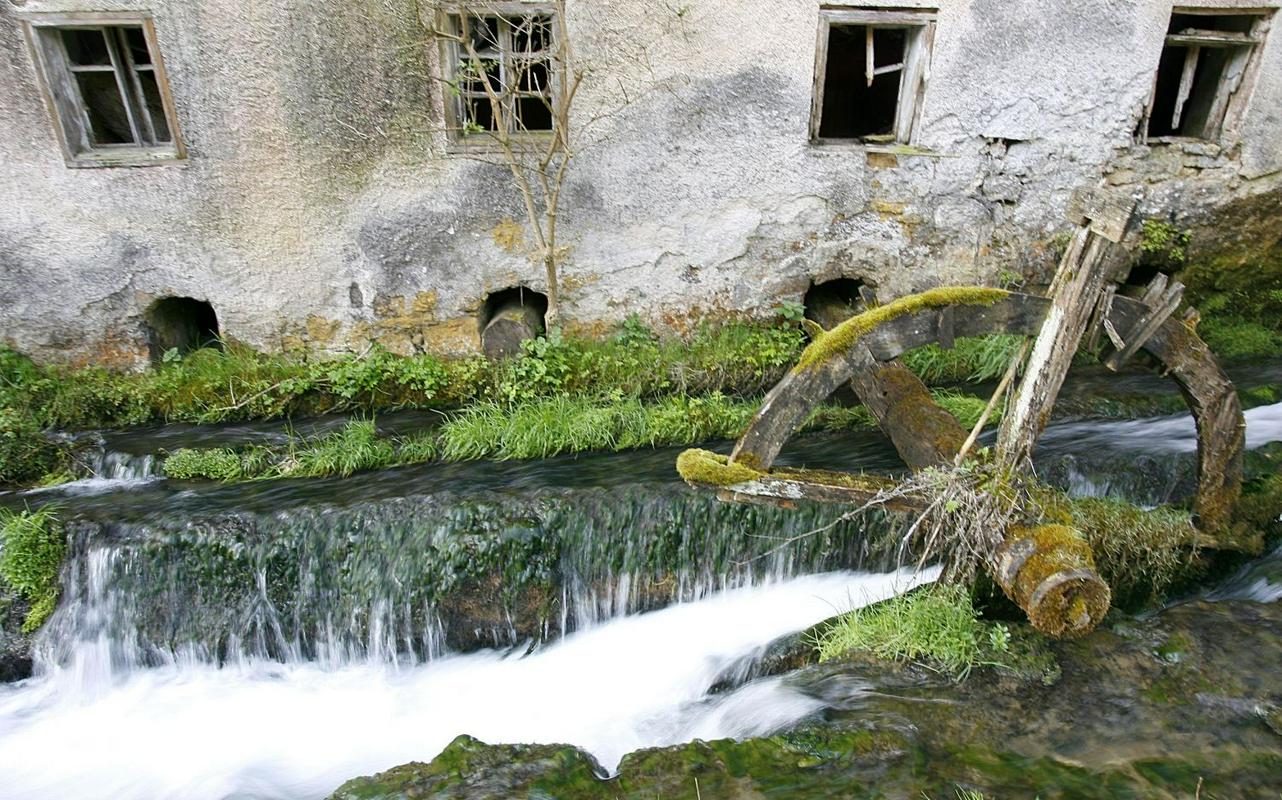
The river was the ideal site for mills since it featured several natural dams, made mostly of tufa stone, that allowed the water to be easily rerouted; the streams then powered the waterwheels, which turned the millstones. At first used only to produce flour, the waterwheels eventually powered several industrial facilities, including foundries. In several places along the river, the water was used to power gigantic bellows, which kept the foundry furnaces running day and night.
The 19th and the early 20th centuries were particularly busy along the river. At one time, more than two dozen mills and 14 water-powered saws operated along the Krka. Frequently, entire families worked in the mills, which supplied practically all the villages in the area with flour. The mills were immortalized by the painter France Slana, a passionate admirer of the Krka River and its people.
After World War II, the number of mills began to decline. The drive toward more efficient and cheaper technology meant that traditional methods were increasingly dismissed as outdated. Most of the mills were abandoned, and many were ultimately destroyed by the elements.
In recent years, however, old methods of food production are back in vogue, and several of the mills have been restored to their original appearance. One of them, the Štupnik Mill, now once again produces flour commercially – and in the age of highly processed food, its artisanal flour is in high demand, providing not just a livelihood for people in the area, but also serving as a reminder of the countless possibilities offered by the scenic Krka River Valley.

































































